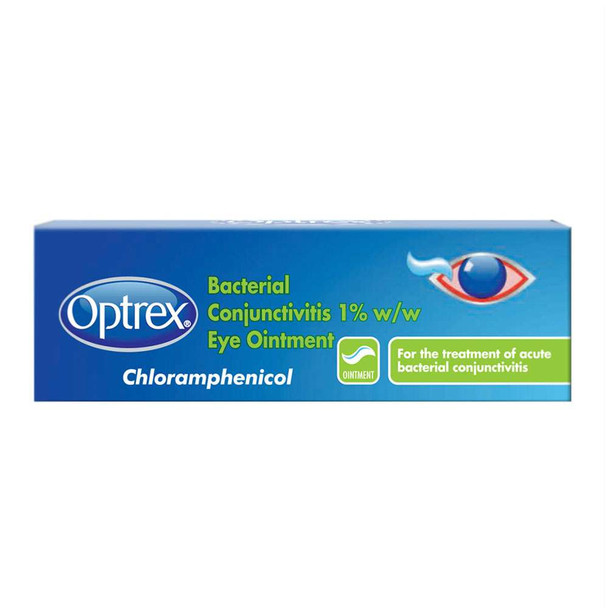Description
Optrex Bacterial Conjunctivitis Eye Ointment helps to treat bacterial infections that affect the outer surface of the eye
- Suitable for adults and children over the age of 2
- If you are pregnant or breast-feeding, think you may be pregnant or are planning to have a baby, ask your doctor for advice before taking this medicine
- You must talk to your doctor if you do not feel better or feel worse after 48 hours
DO NOT USE
- if you are allergic to chloramphenicol or any of the ingredients shown under 'Ingredients'
- if you have ever had problems with your blood (in particular with low numbers of blood cells) during previous treatmentswith chloramphenicol
- if you have a family history of blood problems such as low white blood cell, red blood cell or platelet count
- if you have pain within the eye
- if your eye has suffered a blow or other injury
- if your eye is inflamed and you have a rash on the scalp or face
- if you have the pupil of your eye looks unusual or your eye looks cloudy
- if your eyes are sensitive to light
- if you have (or think you have) a foreign body in your eye, which has not been removed
- if you have recently had an eye infection
- if you suffer from or have ever suffered from glaucoma or dry eye syndrome
- if you wear contact lenses
- if you have had eye surgery or laser treatment in the last 6 months
- if you are using any other eye drops or eye ointment
Please ensure the user has read and understood all relevant information for managing their medical condition on NHS UK Conditions and understands the patient info leaflet (in particular sections 2, 3 and 4) before using this product. If unsure about anything this should be discussed with their GP before using the product.
Please read the Patient Information Leaflet for the full details.






